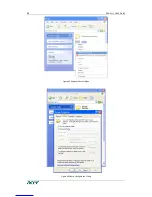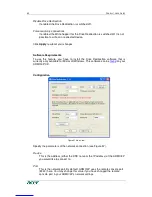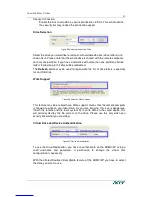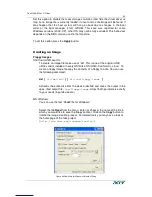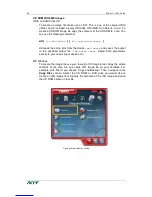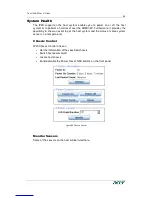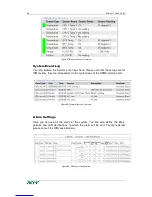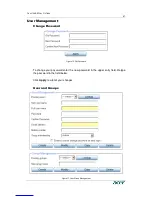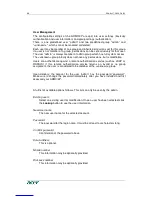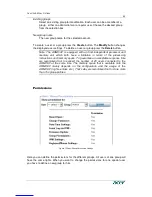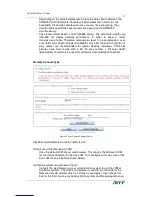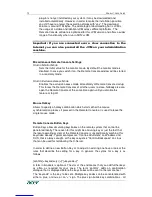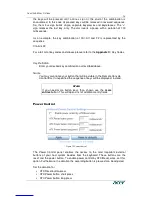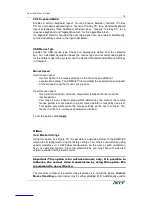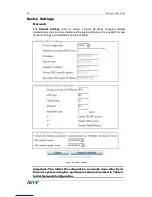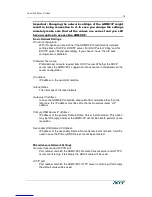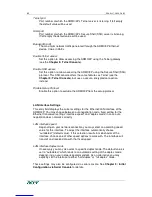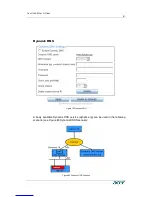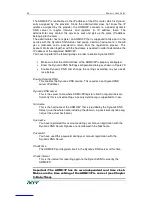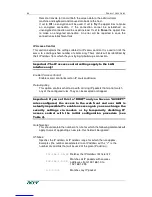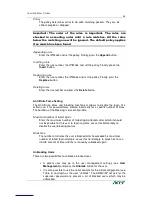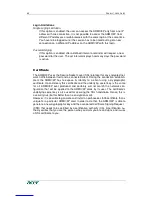
72
P
RODUCT
U
SER
G
UIDE
plug-in is not yet installed on your system, it may be downloaded and
installed automatically. However, in order to make the installation possible,
you still have to answer the according dialogs with “yes”. The download
volume is around 11 Mbytes. The advantage of downloading Sun’s JVM is
the usage of a stable and identical JVM across different platforms. The
Remote Console software is optimized for this JVM version and offers a wider
range of functionality when run in SUN’s JVM.
Important: If you are connected over a slow connection to the
Internet you can also pre-install the JVM on your administration
machine.
Miscellaneous Remote Console Settings
Start in Monitor Mode
Sets the initial value for the monitor mode. By default the monitor mode is
disabled. In case you switch it on, the Remote Console window will be started
in a read only mode.
Start in Exclusive Access Mode
Enables the exclusive access mode immediately at Remote Console startup.
This forces the Remote Consoles of all other users to close. Nobody else can
open the Remote Console at the same time again until you disable this
feature or log off.
Mouse Hotkey
Allows to specify a hotkey combination which starts either the mouse
synchronization process if pressed in the Remote Console or is used to leave the
single mouse mode.
Remote Console Button Keys
Button Keys allow simulating keystrokes on the remote system that cannot be
generated locally. The reason for this might be a missing key or just the fact that
the local operating system of the Remote Console is unconditionally catching this
keystroke already. Typical examples are “Alt+Delete” on Windows and
DOS, that is always caught, or the key sequence “Backspace” on Linux
that can be used for terminating the X-Server.
In order to define a new Button Key or to adjust an existing one have a look at the
rules that describe the setting for a key. In general, the syntax for a key is as
follows:
[confirm] <keycode>[+|-|<[*]<keycode>]*
A term in brackets is optional. The star at the end means that you add further keys
as often as required for your case. The term “confirm” adds an confirmation
dialogue that is displayed before the key strokes will be sent to the remote host.
The “keycode” is the key to be sent. Multiple key codes can be concatenated with
either a plus, a minus, or an “<” sign. The plus sign builds key combinations - all
Summary of Contents for ARMC_3P
Page 2: ......
Page 11: ...FIGURES vii ...
Page 12: ......
Page 28: ......
Page 60: ......
Page 70: ...58 PRODUCT USER GUIDE Figure 54 Explorer Context Menu Figure 55 Share Configuration Dialog ...
Page 118: ......
Page 120: ......
Page 122: ......
Page 136: ......

